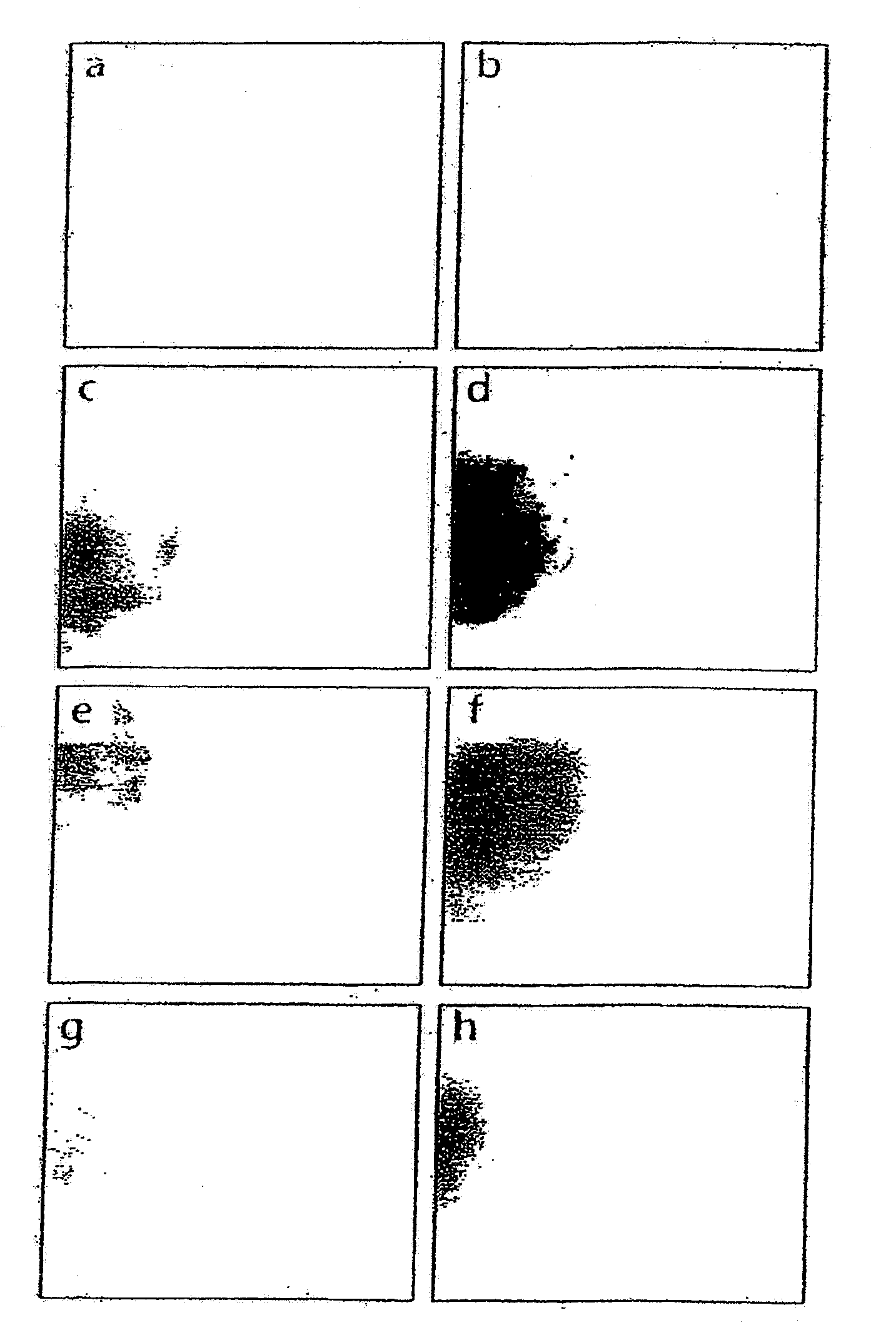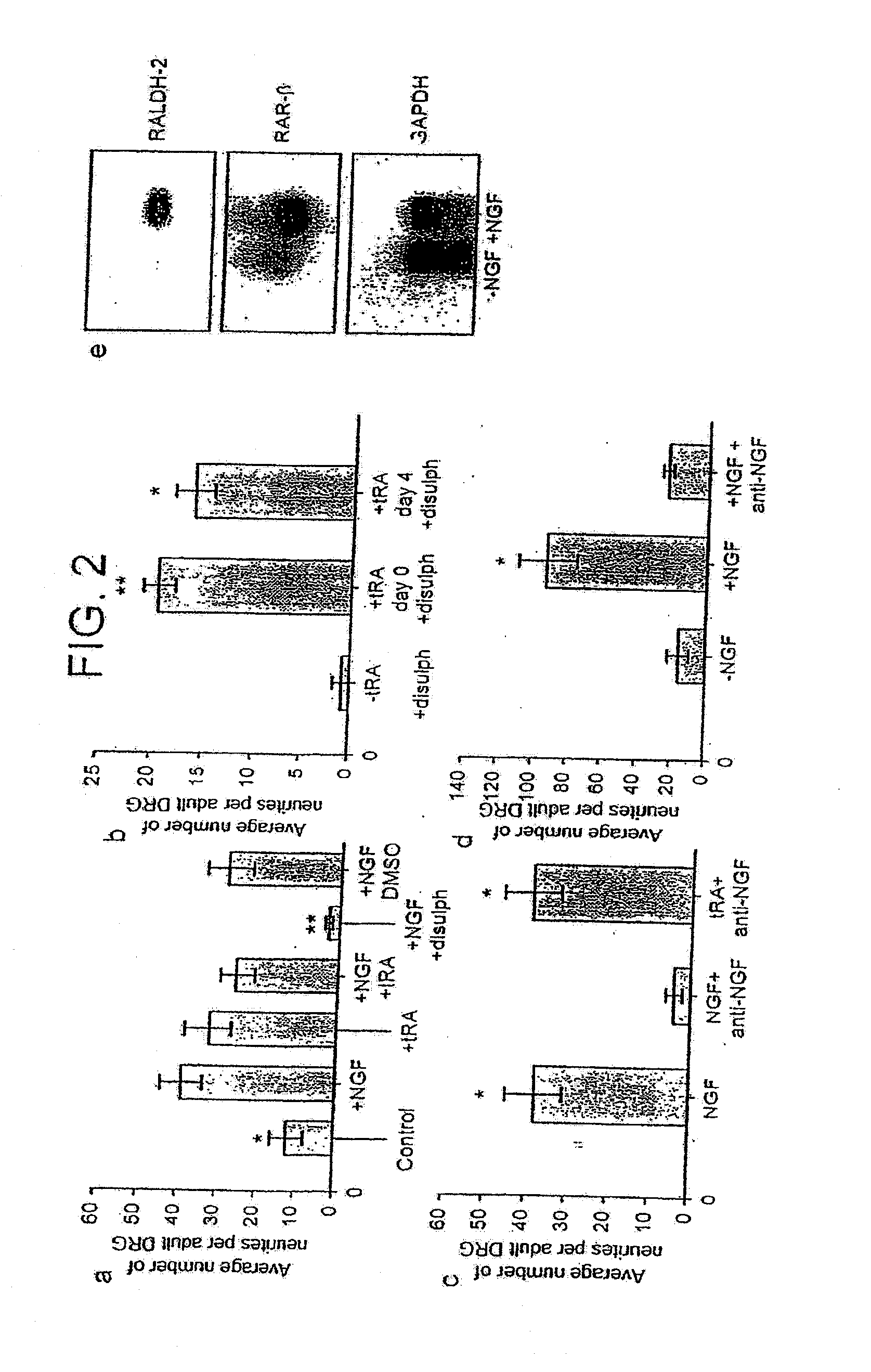Factor
a technology of neurite growth and factor, applied in the field of neurite growth factor, can solve the problems of limited peripheral nerve regeneration, permanent disability, muscle atrophy, etc., and achieve the effects of avoiding ngf administration to a subject, facilitating neural cell development, and preventing neurite outgrowth
- Summary
- Abstract
- Description
- Claims
- Application Information
AI Technical Summary
Benefits of technology
Problems solved by technology
Method used
Image
Examples
example 1
REFERENCES TO EXAMPLE 1
[0242]1. Lindsay, R. J. Neurosci. 8, 2394-2405 (1988).[0243]2. Quinn, S. D. P. & De Boni, U. In Vitro Cell. Dev. Biol. 27A, 55-62 (1991).[0244]3. Haskell, B. E., Stach, R. W., Werrbach-Perez, K. & Perez-Polo, J. R. Cell Tissue Res. 247, 67-73 (1987).[0245]4. Rodriguez-Tebar, A. & Rohrer, H. Development 112, 813-820 (1991).[0246]5. Wion, D., Houlgatte, R., Barbot, N., Barrand, P., Dicou, E. & Brachet, P. Biochem. Biophys. Res. Comm. 149, 510-514 (1987).[0247]6. Kastner, P., Chambon, P. & Leid, M. in Vitamin A in Health and Disease (ed. Blomhoff, R.) 189-238 (Dekker, New York, 1994).[0248]7. Kliewer, S. A., Umesono, K., Evans, R. M. & Mangelsdorf, D. J. in Vitamin A in Health and Disease (ed. Blomhoff, R.) 239-255. (Dekker, New York, 1994)[0249]8. Mangelsdorf, D. J. & Evans, R. M. Cell 83, 841-850 (1995).[0250]9. Millbrandt, J. Neuron 1, 183-188 (1988).[0251]10. McCaffery, P., Lee, M.-O., Wagner, M. A., Sladek, N. E. & Drager, U. Development 115, 371-382 (1992)....
example 2
REFERENCES TO EXAMPLE 2
[0258]1. David, S. & Agayo, A. J. Axonal elongation into peripheral nervous system “bridges” after central nervous system injury in adult rats. Science 214, 931-933 (1981).[0259]2. Cheng, H., Cao, Y. & Olsen, L. Spinal cord repair in adult paraplegic rats: partial restoration of hind limb function. Science 273, 510-513 (1996).[0260]3. Schwab, M. E. Nerve fibre regeneration after traumatic lesions of the CNS; progress and problems. Phil. Trans. R. Soc. Lond. B 331, 303-306 (1991).[0261]4. Bregman, B. S. et al. Recovery from spinal cord injury mediated by antibodies to neurite growth inhibitors. Nature 378, 498-501 (1995).[0262]5. Schnell, L. et al. Neurotrophin-3 enhances sprouting of corticospinal tract during development and after adult spinal cord lesion. Nature 367, 170-173 (1994).[0263]6. Li, Y. et al. Repair of adult rat corticospinal tract by transplants of olfactory ensheathing cells. Science 277, 2000-2002 (1997).[0264]7. Kobayashi, N. R. et al. BDNF a...
example 3
REFERENCES TO EXAMPLE 3
[0286]Achkar, C. C., Dergiuni, F., Blumberg, B., Langston, A., Levin, A. A., Speck, J., Evans, R. M., Bolado, J., Nakanishi, K., Buck, J. and Gudas, L. J. (1996). 4-oxoretinol, a new natural ligand and transactivator of the retinoic acid receptors. Proc. Natl. Acad. Sci. USA 93, 4879-4884.[0287]Ang, H. L. and Duester, G. (1997). Initiation of retinoid signalling in primitive streak mouse embryos: spatiotemporal expression patterns of receptors and metabolic enzymes for ligand synthesis. Dev. Dynam. 208, 536-543.[0288]Barde, Y.-A., Edgar, D. and Thoenen, H. (1982). Purification of a new neurotrophic factor from mammalian brain. EMBO J. 1, 549-553.[0289]Buck, J., Derguini, F., Levi, E., Nakanishi, K. and Hammerling, U. (1991). Intracellular signalling by 14-hydroxy-4,14-retro-retinol. Science 254, 1654-1656.[0290]Campenot, R. B. (1977). Local control of neurite development by nerve growth factor. Proc. Natl. Acad. Sci. USA 74, 4516-4519.[0291]Crowley, C., Spence...
PUM
 Login to View More
Login to View More Abstract
Description
Claims
Application Information
 Login to View More
Login to View More - R&D
- Intellectual Property
- Life Sciences
- Materials
- Tech Scout
- Unparalleled Data Quality
- Higher Quality Content
- 60% Fewer Hallucinations
Browse by: Latest US Patents, China's latest patents, Technical Efficacy Thesaurus, Application Domain, Technology Topic, Popular Technical Reports.
© 2025 PatSnap. All rights reserved.Legal|Privacy policy|Modern Slavery Act Transparency Statement|Sitemap|About US| Contact US: help@patsnap.com



